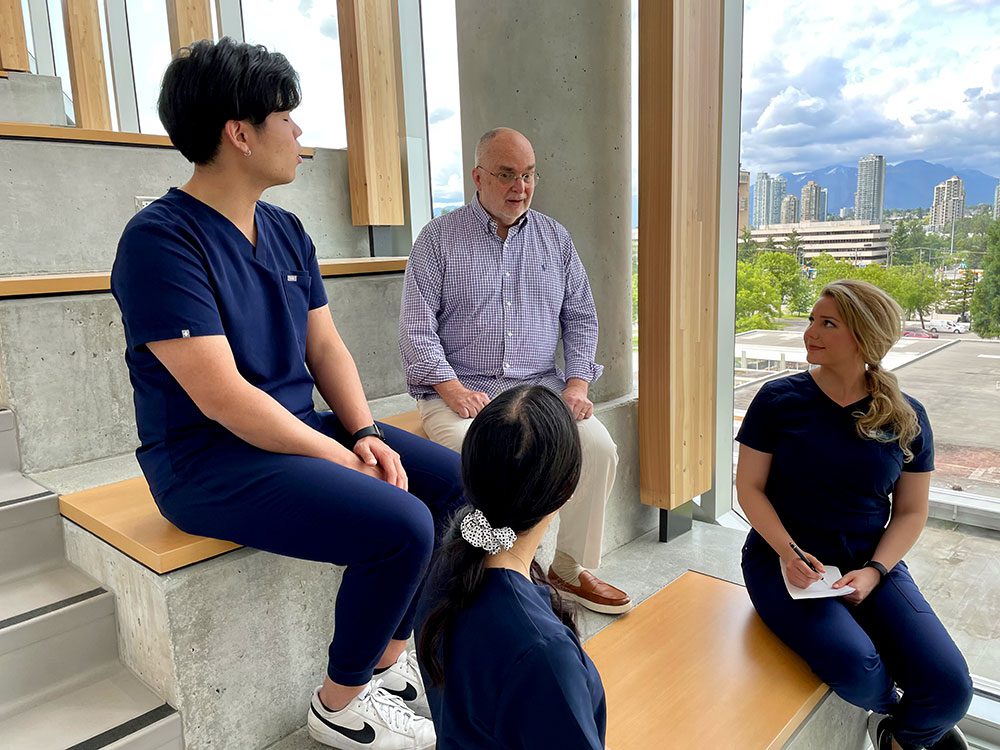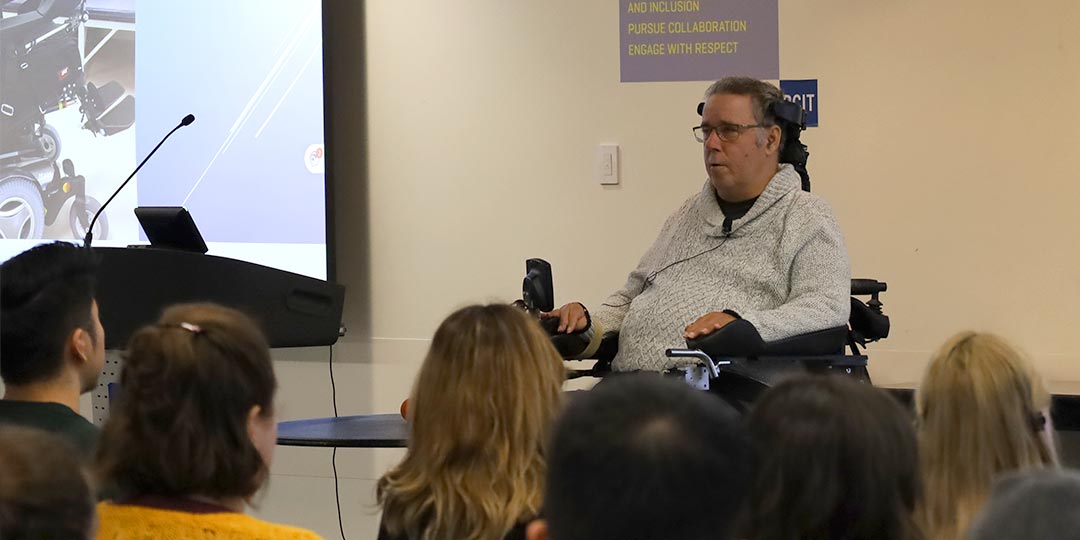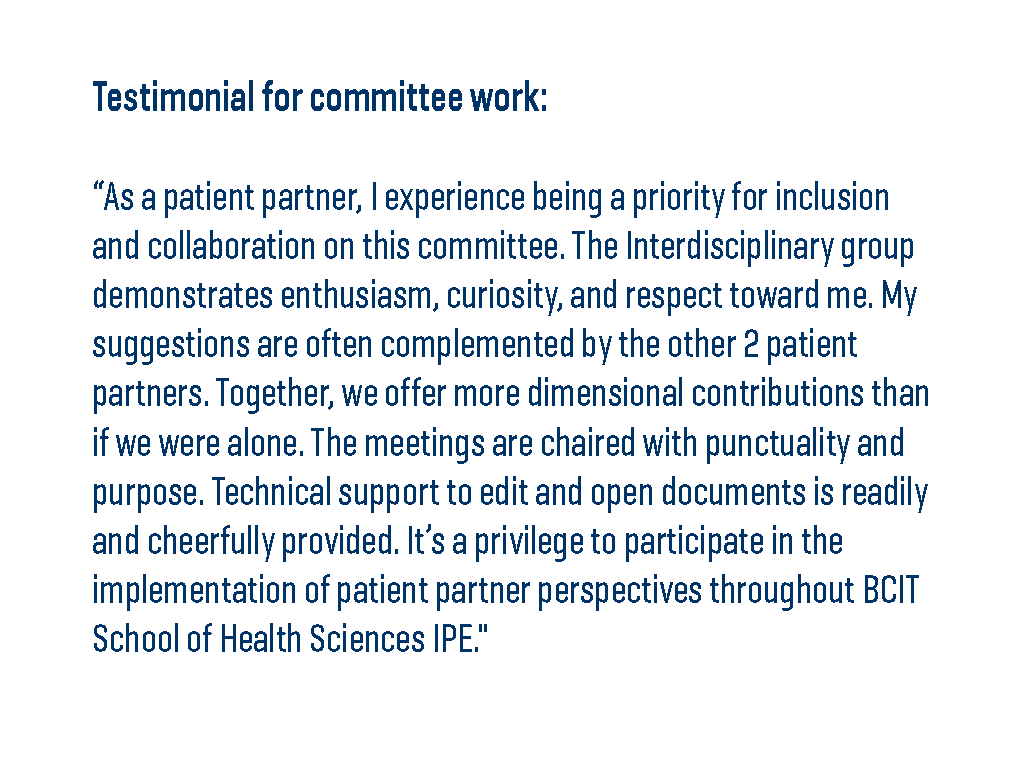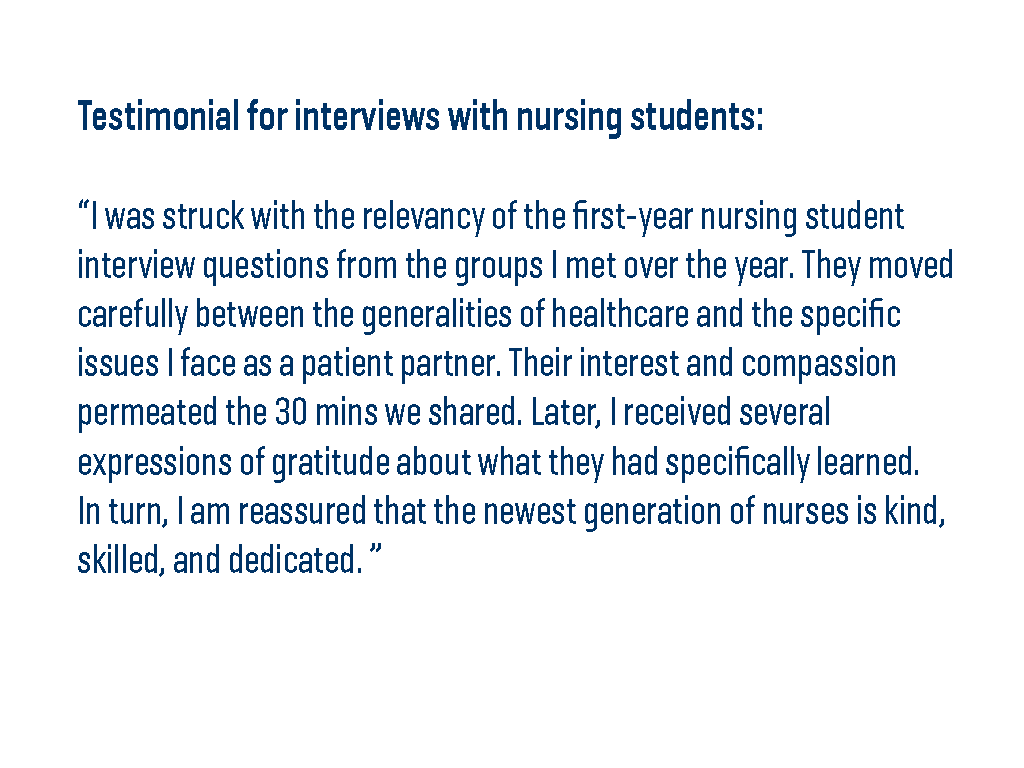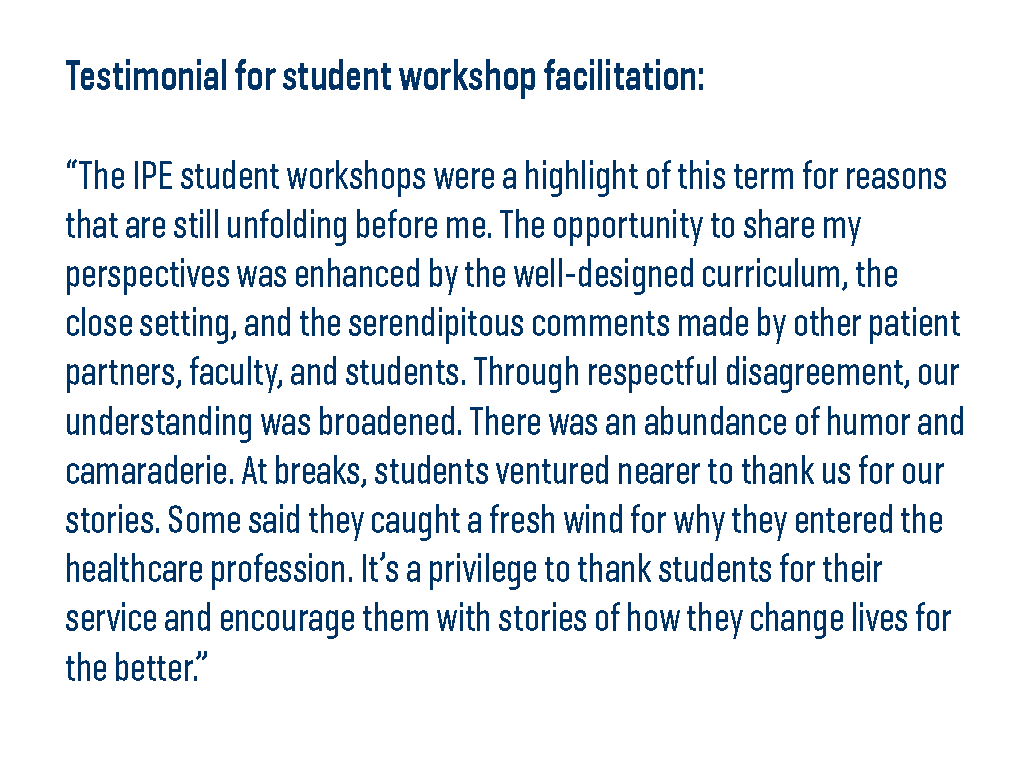Who are Patient Partners?
Individuals who have experience with the health care system as a patient, family and/or caregiver may identify as a “Patient Partner”. Some patient partners are advocates/allies of Person* and Family Centred Care (PFCC) based on their experience working in health care, education, government policy, and advocacy.
PFCC is “an approach that fosters respectful, compassionate, culturally appropriate and competent care that is responsive to the needs, values, beliefs and preferences” (CAMH, 2024) of patients and their families. PFCC encourages a shift from providers doing something to or for patients —to working with patients in a true partnership.
*Person refers to patients, clients, residents, caregivers, and family.
Center for Addiction and Mental Health (2024). Patient and Family-Centred Care.
Patient Partners at BCIT
Our Vision for Inclusion of Patient Partners at the School of Health Sciences (SoHS):
We support learners in the development of Culturally Safe PFCC through the integration of patient partners.
Principles of PFCC in Education
- Dignity and Respect: Incorporating patient partners’ perspectives including knowledge, values, beliefs, and cultural wisdom into the planning and provision of curricula.
- Collaboration: Faculty, students, staff, and patient partners collaborate as a team to promote Culturally Safe PFCC.
- Information Sharing: Relevant and timely information and opportunities for dialogue exist among faculty, staff, students, and patient partners.
- Participation: The involvement of patient partners is integral to the design and delivery of healthcare programs.
(Adapted from: British Columbia Ministry of Health (2015). The British Columbia Patient-Centered Care Framework. Victoria, British Columbia, Canada: British Columbia Ministry of Health; 1–5)
Why become a patient partner?
Partnerships with patients and their families provide valuable perspectives for health science students in learning to provide Culturally Safe PFCC. The SoHS educates and trains over 30 types of healthcare professionals who provide care in BC’s many health settings. Browse for some examples of healthcare programs at BCIT.
The Patient Partners Program provides enrichment to students and faculty in the SoHS Interprofessional Education Program (IPE). Healthcare students from different professions learn alongside one another and gain collaborative skills to improve patient safety and health outcomes (WHO, 2010).
What does a Patient Partner do?
Patient Partners as Facilitators, Advisors, and Mentors:
By sharing their lived experiences patient partners bring diverse backgrounds, health needs, and unique perspectives of “what matters most” for patients and families when receiving healthcare.
Patient partners may facilitate workshops or speak to larger groups. Patient partners may be interviewed by students or participate in non-invasive investigations. As essential members of committees, patient partners advise on how patient and family perspectives can enrich the curriculum to improve the quality of care. Patient partners at BCIT may attend facilitation skills workshops and liaise with each other and faculty to improve the effectiveness of the patient partner program.
What previous experience would be an asset?
- Familiarity with the health care system as a patient, family member, caregiver, or advocate.
- Experience interacting with student health care professionals.
- Appreciation of diverse perspectives through respectful discussions.
- Previous committee experience
- Experience with technology such as using Microsoft office tools, tracking edits on documents, and virtual meetings using Zoom.
